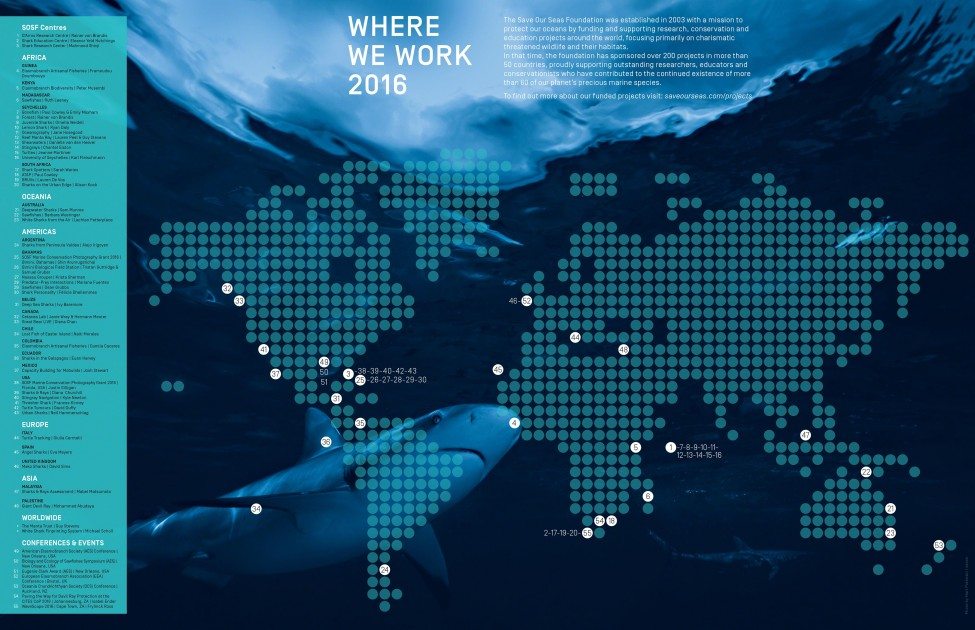Editorial #05
Summer | June 2016 issue
Photo by Byron Dilkes
Since the birth of humankind, the oceans have represented the last frontier; we have always been drawn to this mysterious, vast and compelling ecosystem. But today the birthplace of life on earth is under dire threat from human-related exploitation and other actions, both direct and indirect.
Until not so long ago the great whales were hunted the world over, almost to extinction. Now, however, several populations of these formerly threatened cetacean species are on the path to recovery. Overall, they represent a conservation success story. This shows that, when working together and often led by a few devoted individuals, we can make a real difference.
Since its inception in 2003, the Save Our Seas Foundation has been fully committed to better protecting another pivotal element of complex marine ecosystems: the Chondrichthyes, otherwise known as the cartilaginous fishes. They include close to 1,200 species of sharks, rays, skates, sawfishes and chimaeras.
In 2016, the Save Our Seas Foundation continues its engagement by making a special call for research applications on some of the most threatened Chondrichthyes: sawfishes. Characterised by long, toothed snouts, these warm-water, shark-like rays are the largest of the rays, reaching a length of more than seven metres (23 feet). Once found in the coastal waters and rivers of more than 90 tropical and subtropical countries, all five species are today classified as Endangered or Critically Endangered.
Inspired by the unparalleled and unequivocal pledge from our Founder, our collaboration and work with passionate and dedicated project leaders continues around the world with a clearly defined responsibility towards these important animals and their respective habitats.

